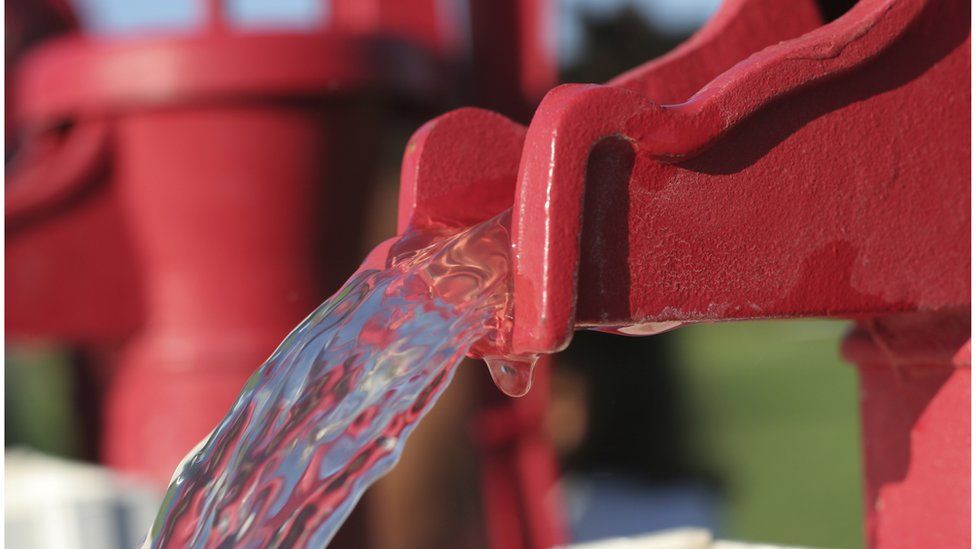Earth's underground water quantified
- Published

The total amount of groundwater on the planet, held in rock and soil below our feet, is estimated to be 23 million cubic km.
If this volume is hard to visualise, imagine the Earth's entire land surface covered in a layer some 180m deep.
The new calculation comes from a Canadian-led team and is published in the journal Nature Geoscience.
Significantly, little of this water - just 6% - is the kind of bankable resource that is most useful to people.
That small fraction is referred to as "modern" groundwater: it is extractable because it is near the surface, and can be used to supplement above-ground resources in rivers and lakes.
"It's the groundwater that is the most quickly renewed - on the scale of human lifetimes," explained study leader Tom Gleeson from the University of Victoria.
"And yet this modern groundwater is also the most sensitive to climate change and to human contamination. So, it's a vital resource that we need to manage better."
Finite resource
To quantify just how much water is stored in the top 2km of the Earth's surface, Dr Gleeson's team had to combine large data sets with an element of modelling.
They included information on the permeability of rocks and soil, on their porosity, and all that is known about water table gradients, which tell you about inputs from precipitation.
Key to determining the age of all this stored water is a collection of thousands of tritium measurements.
Tritium is a radioactive form of hydrogen that spiked in the atmosphere 50 years ago as a result of thermonuclear bomb tests.
It can therefore be used as a tracer for all the rain that has made its way underground ever since.
The map above shows the distribution of this modern groundwater around the globe.
Dark blue shows where it is very quickly renewed. Light blue shows the older groundwater, which is mostly stagnant and non-renewable.
"Old water is highly variable," Dr Gleeson told BBC News.
"Some places it is quite deep, in some places not. In many places, it can be poor quality.
"It can be more saline even than ocean water and it can have lots of dissolved metals and other chemicals that would need to be treated before it could be used for drinking or agriculture."
This puts further emphasis on the modern reserves and the need to manage them in a sustainable way. The study underlines just how unevenly they are spread around the globe.
The next step, Dr Gleeson said, was to try to work out just how fast some water stores were being depleted.
Also writing in Nature Geoscience, Ying Fan, from Rutgers University, US, commented that "this global view of groundwater will, hopefully, raise awareness that our youngest groundwater resources - those that are the most sensitive to anthropogenic and natural environmental changes - are finite".
Jonathan.Amos-INTERNET@bbc.co.uk and follow me on Twitter: @BBCAmos
- Published27 August 2014
- Published5 September 2013
- Published23 August 2013
- Published20 April 2012